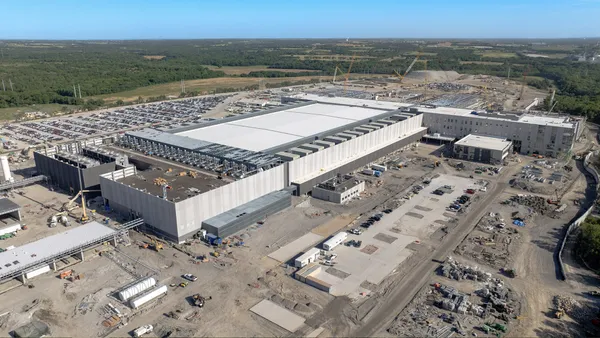UPDATE: Aug. 24, 2020: In another sign that future work for contractors is drying up, architectural billings failed to show any progress during July, and business conditions continued to be soft at architecture firms, according to a new report from the American Institute of Architects (AIA).
The pace of decline during July remained at about the same level as in June with both months posting an Architectural Billings Index score of 40.0 (any score below 50 indicates a decline in firm billings). While firms reported a modest decline for inquiries into new projects—slipping from 49.3 in June to 49.1 in July— newly signed design contracts declined more critically, falling from a June level of 44.0 to 41.7 in July.
In April, the ABI fell to an historic low and has remained low since then.
“It’s clear the pandemic continued to contribute to uncertainty in business conditions, especially as cases spiked in states across the country,” said AIA Chief Economist Kermit Baker in a press statement. “While clients expressed interest in exploring new projects, many are hesitant to sign onto new contracts with the exception of the multifamily residential sector, which came close to seeing billings growth in July.”
Dive Brief:
- Construction backlog — the number of projects contractors have signed to their books, but haven’t begun working on yet — was a full month lower in July than a year ago, according to the Associated Builders and Contractors (ABC), amounting to a 13% year-over-year decline.
- In an increasingly competitive bidding environment, profit expectations also fell in July, according to ABC, with 47% of contractors anticipating lower profit margins in the next six months. Just 12% of contractors foresaw lower profits at this time last year.
- Anirban Basu, ABC’s chief economist, said that current economic indicators amount to “a perfect storm” for construction that won’t show up in firms’ financial results until early 2021, with smaller firms facing the biggest risk of business failure.
Dive Insight:
The declines in contractors’ backlog and profit expectations are two more data points in an increasingly bleak parade of indicators for the construction industry. Taken together, the data signal that conditions will get worse, perhaps significantly so, before they get better, Basu said.
“The decline we’ve seen in backlog recently may understate the level of distress contractors will experience next year,” Basu said. “Based on the level of backlog today, many firms will remain occupied until 2021, but at that point, you may see quite a few contractors running out of work.”
From June to July, backlog dropped by 0.3 months, which may seem relatively small, but on an annualized basis would result in a 3.6 month shrinkage, or a 46% reduction in the current average backlog of 7.8 months. "That's an awfully big number," Basu said, noting that until COVID-19 struck, backlog had consistently grown.
The falling backlog numbers materialized as fewer projects came to market to replace work that’s been completed. That, in turn, has forced contractors to put in low bids for new work just to keep their staffs on the job, which in turn is impacting profitability.
“The competition for the projects that are being bid is fierce,” Basu said. “A lot of people are bidding on projects right now for very little profit margin.”
Readers responding to recent Construction Dive surveys have indicated that they are worried about finding new work and are bidding jobs at lower margins to do so.
At Grand Rapids, Michigan-based national general contractor Rockford Construction, president of construction Shane Napper said his firm's backlog has declined due to COVID-19 and revenues have taken about a 12.5% hit in 2020. He also said project fees, which impact profits, have declined by about 25 basis points since March.
But while he anticipates being able to weather those dips at his firm, which was tracking at $450 million in revenue before COVID-19, he worries about the potential for the smaller subcontractors he relies on getting squeezed next year.
“The interesting part that I don't think our industry has seen yet is that at the trade contractor level, they don’t have as much backlog as GCs do,” Napper said. “I think by the beginning of second quarter 2021, we are going to see a steep increase in trade contractor defaults.”
Basu has the same concern. “Generally speaking, during times of economic stress, it’s the smaller contractors who suffer the most,” he said. “They have the smallest balance sheets and the least stable banking relationships.”
He worries that if the survival bidding environment escalates, those smaller construction firms could risk going out of business.
“Some firms are bidding as if their survival depends on winning a particular bid,” Basu said. “They’re not worried about profitability. They’re worried about survival. I think the number of firms in that position will grow going forward.”













